Bankstown is the new home of Bengali, Pakistani and Nepalese food
It’s not just the Lebanese and Vietnamese cuisine that draws serious food lovers to the Bankstown area. People are travelling from far and wide to eat some of the best Bengali, Pakistani and Nepalese cuisine this side of the subcontinent.
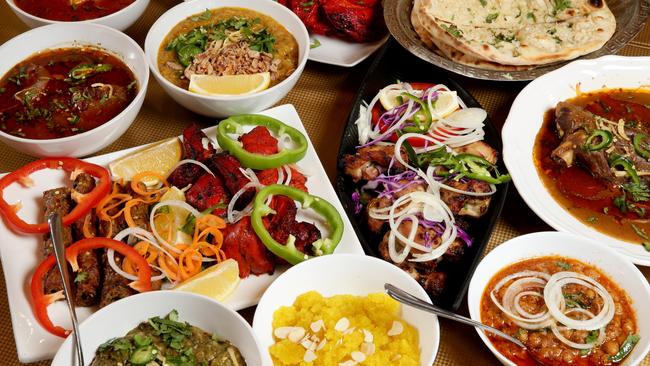
Top row from L-R; beef nihari, haleem, garlic naan
Middle row; tandoori chicken and shish kebab, chicken malai bodi, lamb shank nihari
Bottom row; saag, halwa, lahori chani
Picture: Jonathan Ng
FOODIES love Bankstown for its pho and falafel, but the flavours of the Indian subcontinent are also making their presence felt, with fusca, puri and momo dumplings now on the menu.
Long known for its Lebanese and Vietnamese cuisine, the Canterbury-Bankstown area is one of the most multicultural in the state, with more than 120 nationalities, ensuring a diverse offering of cuisines.
LAKEMBA’S NIGHT FOOD MARKET IS ABSOLUTELY MIND-BLOWING
But it's the spike of residents from the Indian subcontinent since 2011 that’s really putting the area on the map for Nepalese, Pakistani and Bengali food.
Mohammad Abid, 54, who opened Kushboo Sweets and Restaurant in Lakembafive years ago, was inundated with customers especially within the Bengali community.
He served 700 people on the first day, with only three things on the menu; beef tahiri, beef curry with rice and sweet masala tea.
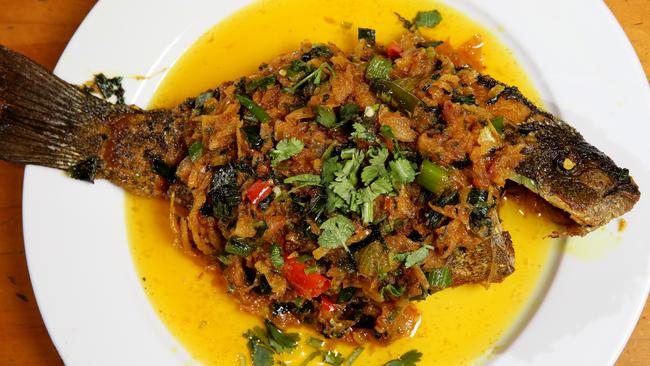
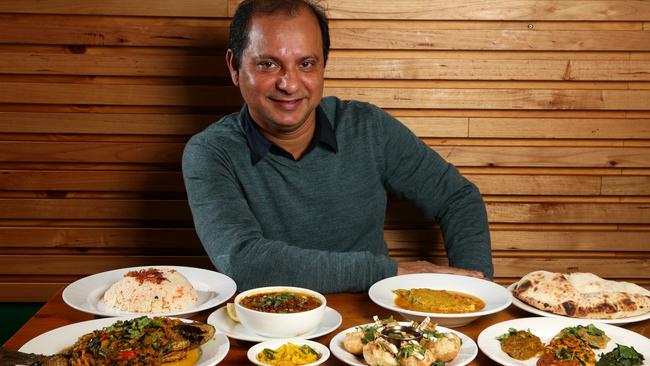
He added a new menu item every fortnight as he recruited more chefs and now has about 60 dishes on the menu, including fusca, round shells stuffed with mix of chickpeas, herbs, egg, spices and tamarind sauce, halim, mixed lentils cooked “forever” and kachi biryani, steamed with spices, herbs, yoghurt and ghee for five hours.
RELATED:
SYDNEY BARS WHERE YOU CAN BE A KID AGAIN
SERIOUSLY GOOD VEGAN CARBONARA PASTA HAS ARRIVED
To cope with demand, he opened Dhaka Delights on the corner of Haldon St two years later, selling desserts made of chickpeas, ricotta and yoghurt such as laddo and shondesh sold by the weight from $28-$35 per kilo. Dawat restaurant in Ingleburn followed in 2015 and he plans to open a CBD or Surry Hills location early next year.
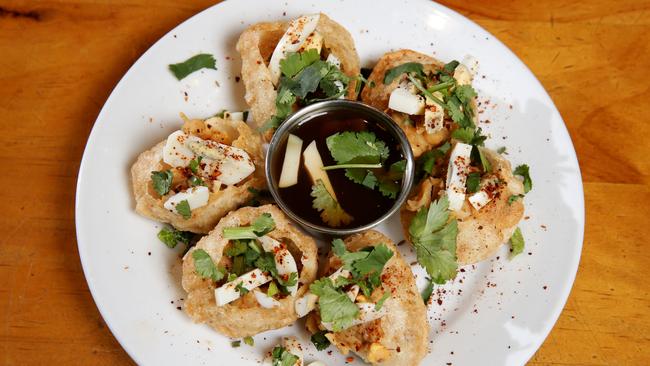
“From 2000 onwards, a lot of Bengali people moved into the area and most of them are first generation. The community changes its food over time, so this is very traditional food that they grew up with,” he said.
“We were the first real Bengali restaurant, there were so-called Bengali restaurants, but really they were serving Indian food.
“The main dishes are pretty similar, but Bengali cooking uses fresh spices.
“When you cook dry spices they burn, which burns the stomach but fresh spices have moisture so they don’t burn and the flavour is intact. You feel good after eating it.”
For the first three years, his customers were Bengali but word spread and now people travel from all over Sydney and interstate.
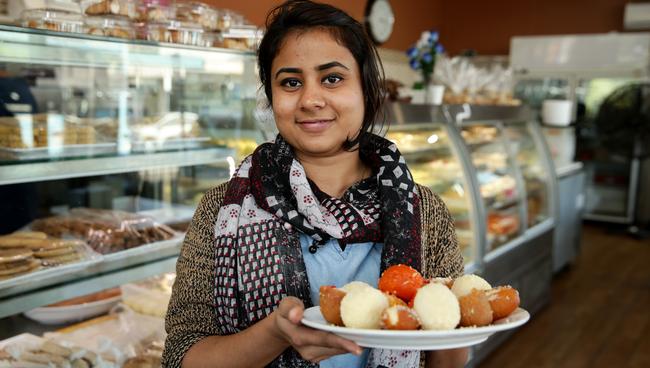
The key to enjoying Bengali cuisine is to leave your idea of etiquette at the door and ignore the cutlery on the table.
Mr Abid demonstrates the correct technique — scoop up a mix of rice and mains with your fingers so it’s in a ball shape, bring your head down to the plate and, moving quickly, use your thumb to flick it into your mouth.
“Food tastes better when you eat with your hands because you have to concentrate on the food,” he said.
Tradition also dictates that at the end of the meal you pour a watery daal over the plate, then pick it up and slurp it down. “It is not rude, it helps you eat everything on the plate.”
PAKISTANI FOOD
Faiza Noshi, 35 and her husband Rana Arshad Mehdi, 40, opened their first Pakistani restaurant, Lahori Dhaba in Punchbowl in 2014, with only 20 seats. A year later they upgraded to a larger space with 200 seats.
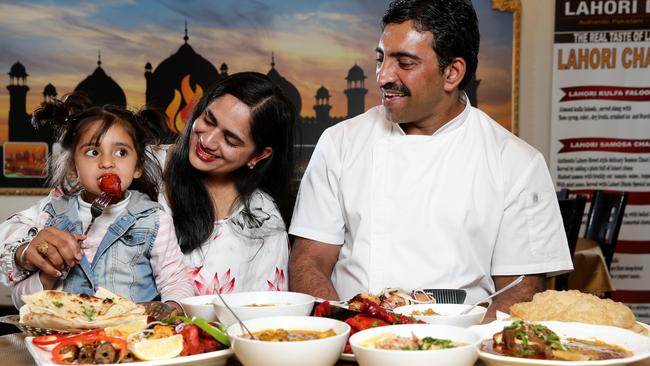
Mr Mehdi quickly noticed that Sydneysiders were big on breakfast, so they put on a traditional Pakistani breakfast
“Before us, no one else was doing it and it clicked,” he said. “People come from interstate, we have customers from Perth and Canberra.”
Lahori chani is a spicy chickpea curry served with bright yellow halwa, a sweet semolina and puri, a wheat-based, fried flatbread are made to be eaten together, a combination of sweet and spicy.
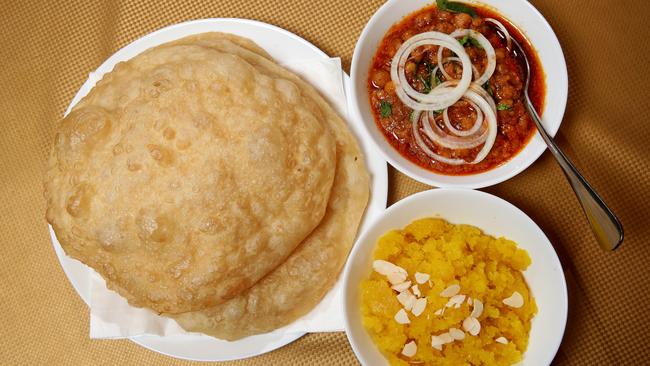
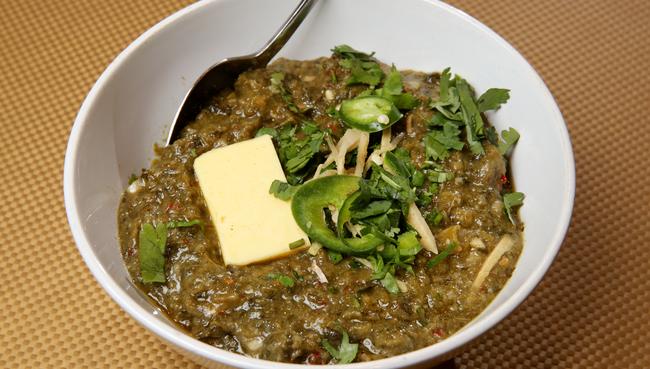
Other popular dishes include shank nihari, lamb shank in gravy, haleem, a lentil and meat stew and saag, a mix of mustard greens, fenugreek, spinach, chilli and ginger.
Typically, Pakistani dishes use less spices than Indian cuisine.
“It makes the flavours more distinct,” Mr Mehdi said.
The next step in their expansion is a cafe attached to the restaurant serving popular street food such as samosa, chaat and desserts.
NEPALESE FOOD
The perfect, precise pleats of a Nepalese momo dumpling bring to mind Cantonese har gow dumplings served at yum cha. Bordered by Tibet and India, the food of Nepal borrows from its neighbours. At AD’s Kitchen in Campsie, the dinner buffet spans fried rice, noodles, pakodas, curries, daal and dumplings.
Chicken Choila, the most popular dish in Nepal after momo, contains influences from both cultures; soy sauce, mustard oil, chilli, onion, garlic and coriander.
Dhedo could be describes as Nepal’s answer to polenta, a buckwheat flour base is boiled until thick and creamy and replaces rice when served with curries.
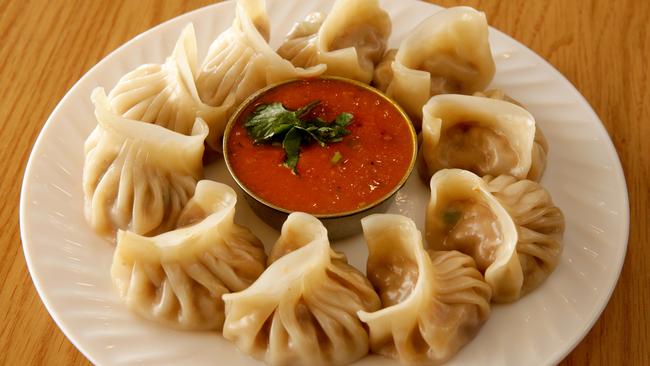
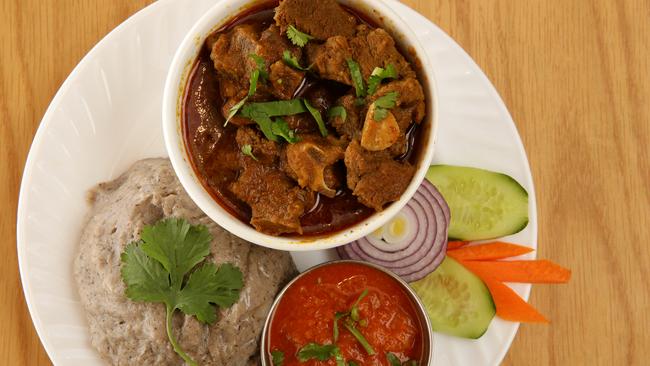
Anjana Dhakal, 38, and her husband Amit Acharya, 39 and, came to Australia in 2009 as students. She missed the momo from home and started selling takeaway packs to local grocers. Their popularity encouraged the pair to open their first cafe in Ashfield in 2013 selling a mix of Nepalese and continental cuisine before opening a Nepalese restaurant in 2015, before moving it to Campsie last year.
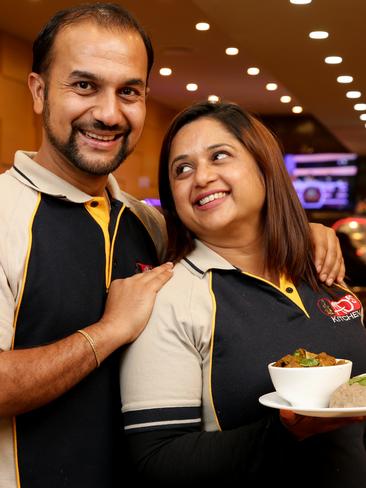
At the moment 70 per cent of customers are Nepalese, but Mr Acharya hopes to change that.
“We are the first Nepalese restaurant in Australia with a buffet, $15 for breakfast and $30 for dinner, because we want to share our food with everyone,” he said.
“Think about Thai and Vietnamese food 10-15 years ago, we can make it so in the future everyone knows about Nepalese food.”
Ms Acharya is in the kitchen and the takeaway momo business is still going strong, selling 300 boxes of 10 dumplings, $7-$9, daily to grocers around Sydney and in the next six months they’re going to increase the scale and open a factory to keep up with demand.
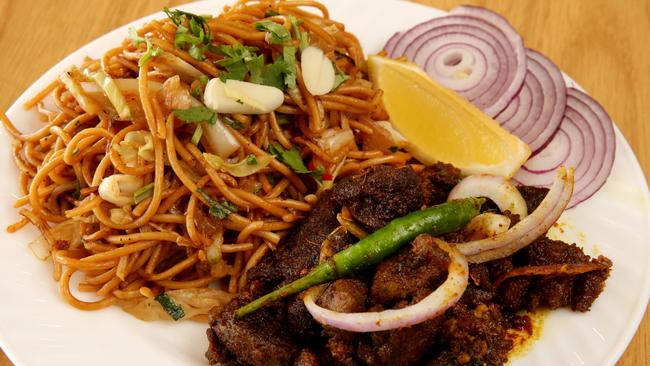
10 PLACES TO TRY IN CANTERBURY-BANKSTOWN
Kushboo Sweets & Restaurant, 38-39 Railway Pde, Lakemba
Traditional Bengali cuisine
Taste of Tangra, 154 Haldon St, Lakemba
Indian style Chinese cuisine
Jasmin Lebanese Restaurant, 30B Haldon St, Lakemba
It’s hard to beat their falafel
An Restaurant, 27 Greenfield Pde, Bankstown
Arguably the best pho in Sydney
Al Aseel, 183 Waterloo Rd, Greenacre
The original. Go for the Lebanese breakfast and don’t miss the fatteh
Valley Bakery, 144 Waterloo Rd, Greenacre
Lebanese za’atar and manoush pizzas
El Jannah, 701 Punchbowl Rd, Punchbowl
The original is in Granville, but if you’re in the area pick up smoky charcoal chook, bright pickles and garlicky toum.
Lahori Dhaba, 800 Punchbowl Rd, Punchbowl
A Pakistani breakfast when you’re sick of avo toast
Number One BBQ House, 152 Beamish St, Campsie
Gives the CBD’s BBQ King a run for its money
AD’s Kitchen, 231 Beamish St, Campsie
Stuff yourself on the Nepalese buffet at breakfast and dinner
Originally published as Bankstown is the new home of Bengali, Pakistani and Nepalese food




